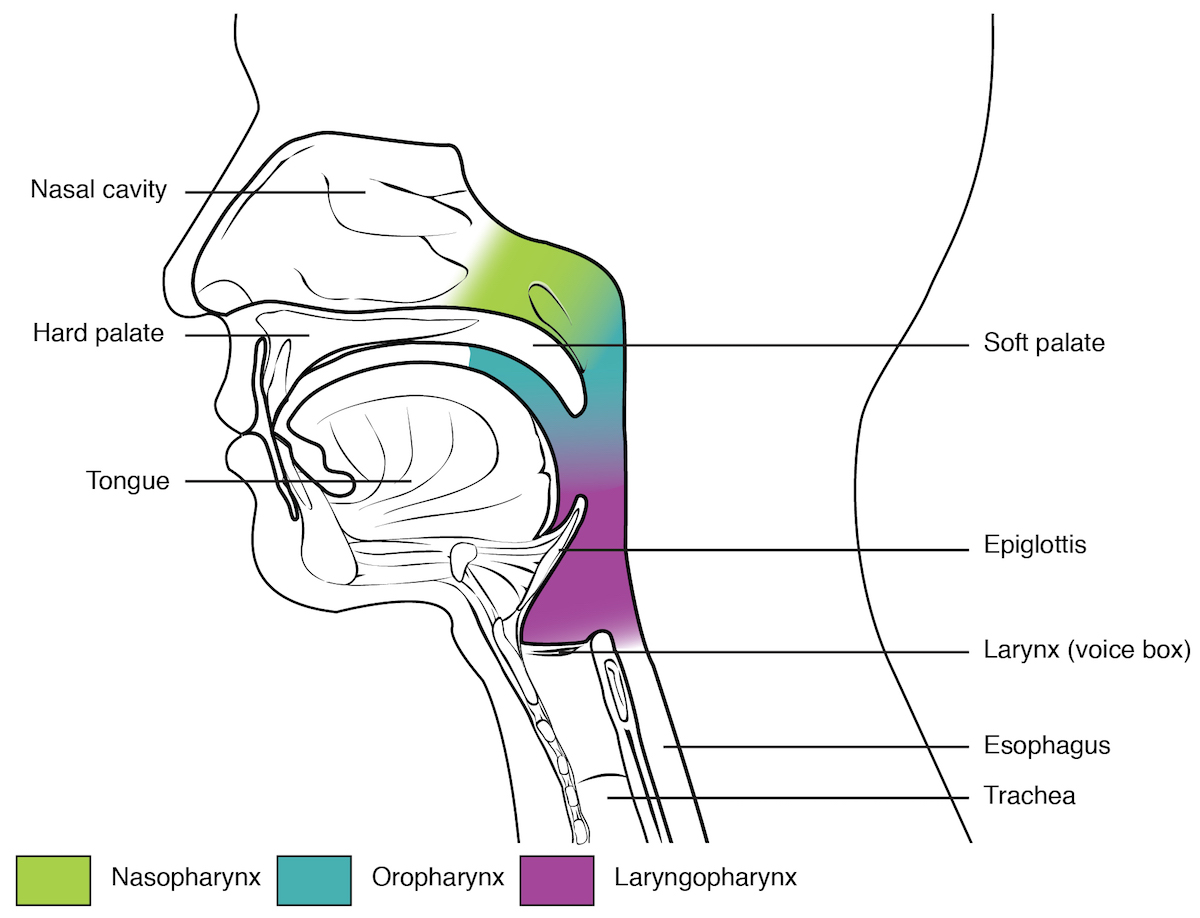 Evolution
Evolution
 Intelligent Design
Intelligent Design
 Medicine
Medicine
Is the Human Neck a “Mistake of Evolution”?

A recent article for Salon by Matthew Rosza argues that the human neck is a “mistake of evolution.” He notes obstructive sleep apnea as a representative example of gross negligence by a purported God who supposedly designed the human body according to a plan. Rosza’s opening volley is to attack the concept of an “intelligent designer,” characterizing the position of intelligent design as one that argues biological machinery is so complex and perfectly calibrated that it had to be “planned out by a deliberate and thoughtful source of some kind.”
However, in the context of biology, intelligent design intentionally makes no mention of who or what the designer is, or what the potential motivations of that designer might be. Moreover, intelligent design takes a straightforward abductive reasoning approach towards design, arguing that design is simply an inference to the best explanation. When we see the amount of human thought and work that goes into creating complex artifacts such as smartphones, automobiles, and jet airplanes, then it is at least reasonable to believe biological organisms, which are far more sophisticated than any human artifact, require thoughtful design.
God and the CPAP Machine
Rosza argues that if there is a “God” who designed human bodies, then that God forgot to ensure we can breathe while we sleep. Well, the God he conceives of obviously didn’t forget, as humans do indeed breathe when we sleep, or I wouldn’t be around to read his article and he wouldn’t be around to write it. The headline itself admits that sleep apnea afflicts 1 out of 15 Americans, so that means 14 out of 15 Americans (93 percent) breathe freely at night with no issues. Thus, the problem doesn’t appear to be with the design itself, but with potential problems that can occur after the fact, such as an obstruction in the throat muscles or improper signals sent to the throat muscles that control breathing.
Rosza does examine the possible causes of sleep apnea, which weaken his argument, as in each case the cause is because something has gone wrong, not that the original design is somehow flawed. He discusses sleep apnea caused by obesity, which is likely due to the actions of that person or to a metabolic abnormality, neither of which indicates a fault in the design itself. Any design can be adversely impacted if not properly maintained, or if it becomes defective through injury or disease. He cites aging as a cause, but we all know aging is a natural process that will eventually lead to the death of any organism. No organisms are designed to live forever. Even the best designed human artifacts eventually fail (and again, intelligent design makes no judgments about why a designer might intend mortality in organisms). Finally, he discusses genetic or anatomical issues that, again, cause the structures to not operate as they should according to the original design.
Rosza goes on to ask how we came to the point in evolution where millions of people must use devices such as the CPAP machine to force air down their throats, allowing them to breath at night, and he argues this is due to “evolutionary trade-offs.” His answer is that as humans evolved to be highly intelligent and walk upright, there were design trade-offs that were introduced, departing from the “nearly perfect design” of the lower animals. This included the need for the necessary equipment to produce the ability to talk. But for what reason would a blind and purposeless process be concerned with adding the ability to walk upright, complex mechanics allowing speech, and the corresponding brain capability to both initiate and interpret speech when talking didn’t even exist yet?
“Absurdity” According to Darwin
Rosza cites Darwin’s argument about the “absurdity” of evolution designing a shared opening to the esophagus and trachea (windpipe), allowing food that travels down the esophagus to potentially fall into the trachea and choke a human (which is normally prevented by the epiglottis flipping down to cover the tracheal opening when food is swallowed). Thus, Rosza concludes, with this and other highly significant anatomical changes needed to place a large cranium on a bipedal organism, “if the human body were a building, our neck would arguably be the most poorly conceived room in the house, overflowing with functionally mismatched organs stuffed there to accommodate other design priorities.” The fact that we sometimes have water or food go down the wrong way is a problem, and in rare cases it can sadly be fatal, but Rosza himself states that this could be to accommodate other design priorities. So it actually may make sense if the product of an actual designer.

To accomplish the anatomical changes Rosza describes, small, incremental steps required by evolution would certainly fail, as a number steps would have to be coordinated concurrently to keep the organism stable (i.e., the more impactful the anatomical changes, the earlier mutations would have to be introduced, which would more than likely seriously destabilize the organism,leading to death). Rosza cites a journal article noting some of the required evolutionary changes to the human head such as a “flat face, smaller chin, shorter oral cavity, changes in jaw function, repositioning of ears behind jaws, ascent of the uvula and descent of the epiglottis, right angle bend in tongue, creation of compliant, combined, flexible airway-footway.” But these changes are only part of the story, as bipedalism is more than just changes to the neck and head. As described by biochemist Fazale Rana, it includes major anatomical changes to the spine, rib cage, pelvis, lower limbs, joint surfaces, and feet as well.
Considering the Dual Tube System
Now Rosza does not offer us an alternative. However, an alternative was proposed by S. Jay Olshansky, Bruce Carnes, and Robert Butler in a Scientific American article titled “If Humans Were Built to Last.” It is quite fanciful in that it proposes, among other fixes to purported human flaws, raising the trachea so that food can only flow around the trachea and not into it. Of course, this design proposal is wholly untested as the authors haven’t successfully built a human being, let alone a flawless one. But by their own admission their redesign of the esophagus and trachea “would need refining, though, because it would disrupt breathing through the mouth and the ability to speak.” Others have proposed a dual tube system where the esophagus and trachea are completely separate, such as in whales. This may work fine for whales, but with humans a shared system provides the advantage of breathing normally with the nose while with increased physical activity we can take in air with our mouths for more rapid respiration. Also, the dual tube system would add more weight as well as width to the neck. Design optimization always requires tradeoffs. The most fuel-efficient automobile could be so lightweight as to not provide a safety margin for passengers in a crash. Airplanes must be lightweight but strong as well. If the human body was intelligently designed, as appears to be the case for many observers, then the neck is a marvel of tradeoffs in which a multitude of functions are accommodated in minimal space.
Most “bad design” arguments are either theological (typically referencing the problem of evil) or philosophical. They have yet to provide demonstrable scientific evidence that evolution can indeed produce novel information within realistic time frames. Darwin made this mistake numerous times in the Origin of Species, purporting to know what God may or may not do with respect to design, and thus arguing as to how a blind, purposeless process acts fully as a designer substitute with no evidence aside from the quite uncontroversial natural selection clearly demonstrated in the book (notably, Darwin does not even address origins).
Evolution News contributor Cornelius Hunter has written extensively on the theme, both on his blog, Darwin’s God, and also in a recent article in the journal Religions. I recommend his work to all interested, and particularly Mr. Rosza. Interestingly, Rosza is currently pursuing his PhD at Lehigh University, so perhaps he should as well give Michael Behe a call or invite him for coffee.
